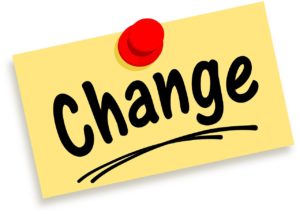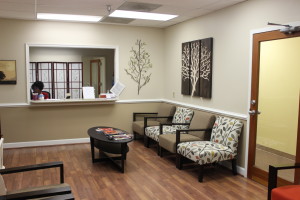This morning, I found myself eating breakfast with my son who had a 2-hour delay from school due to the ice storm. He said, “I don’t like January, I cannot wait for the first day of Spring.” It dawned on me. There is a lesson to be learned from January, a powerful one if we just take a moment to listen to the gifts of this special month.
January on the east coast is defined by cold days, snow, ice and bleak, dreary days. The sun sets way too early, making you feel like the day is way too short. It is harder to do many things that we enjoy doing when it is this cold and dark outside. It is much easier to say, “I will exercise tomorrow” or “I will take the dog out for a walk later today” and then later today turns into tomorrow or sometimes not at all.
Seasonal Affective Disorder is a diagnosis that plagues many Americans, close to 3 million every year, according to the Mayo Clinic. Seasonal affective disorder (SAD) is a type of depression that’s related to changes in seasons. Mayo Clinic reports (https://www.mayoclinic.org/diseases-conditions/seasonal-affective-disorder/symptoms-causes/syc-20364651) that “SAD begins and ends at about the same times every year. If you’re like most people with SAD, your symptoms start in the fall and continue into the winter months, sapping your energy and making you feel moody. Less often, SAD causes depression in the spring or early summer. Treatment for SAD may include light therapy (phototherapy), medications and psychotherapy. Don’t brush off that yearly feeling as simply a case of the “winter blues” or a seasonal funk that you must tough out on your own. Take steps to keep your mood and motivation steady throughout the year. In most cases, seasonal affective disorder symptoms appear during late fall or early winter and go away during the sunnier days of spring and summer. Less commonly, people with the opposite pattern have symptoms that begin in spring or summer. In either case, symptoms may start out mild and become more severe as the season progresses.
Signs and symptoms of SAD may include:
- Feeling depressed most of the day, nearly every day
- Losing interest in activities you once enjoyed
- Having low energy
- Having problems with sleeping
- Experiencing changes in your appetite or weight
- Feeling sluggish or agitated
- Having difficulty concentrating
- Feeling hopeless, worthless or guilty
- Having frequent thoughts of death or suicide
Fall and winter SAD
Symptoms specific to winter-onset SAD, sometimes called winter depression, may include:
- Oversleeping
- Appetite changes, especially a craving for foods high in carbohydrates
- Weight gain
- Tiredness or low energy
Even if you don’t meet criteria for SAD, the winter blues are real! January is the middle of the school year, a time when fatigue sets in and you are less excited about the newness of things, you feel that you still have the second half of the school year to go! It is easy to feel overwhelmed, exhausted, beaten down by winter, less motivated and overall apathetic.
While talking to my son who is on a community swim team, it dawned on me. January is a lot like the third lap of a 100-meter race. The fall is like the first lap of the race when you jump off off the deck ready to go. You plunge into that pool or work week or school year with excitement and hope for a new year of successes. The second lap, late fall, early winter, you think to yourself, “ok, I got this.” You are a bit tired, but you are still fresh and motivated and not that tired or run down. But, here it comes, the third lap, that 25 meters when your legs are so tired they are almost numb, your heart is racing, making it hard to breath and your arms feel like mush. Your internal voice says, “I can’t do this” and you wonder how you can push through this. Perhaps it is a fear of failure, or a loss of faith, or a sense of hopelessness. Maybe you find yourself lifting up your head to steal a peak at your competitor who has their head down, laser focused, and you think to yourself, “how can they do this and I can’t?” But somehow, your legs keep kicking, your arms keep stroking and your heart keeps pumping. But then, like magic, you do that final flip turn and you are in the last lap of this race. And you suddenly get a resurgence of energy, adrenaline and hope. Your internal voice begins to say, “I can do this” and you realize that you are going to finish the race, you will do it! And you finish…just like that.
The third lap is a lot like January. It’s that time of year when you may think to yourself, “I am tired, and I don’t want to do my homework” or “I want to stay in bed and not go to work” or “I don’t want to go to the gym today.” A challenge for all of us is to see the blessings of January. That middle lap in the race is a lot like January because it is the time when we must work to keep feeling hopeful and motivated and resourceful. January does not take it easy on us, it challenges us to be the best versions of ourselves. It forces us to focus on the good that is to come, warmer weather, longer days filled with sunshine, summer! It forces us to both live in the more challenging moments, while we look forward to what is ahead.
Life is often measured by how we persevere when times are tough and challenging, not when they are easy. January forces us to practice this skill. Like the third lap of a 100-meter race, January is relentlessly demanding of our energy, hope, positive attitude and perseverance. If we take a moment to respect the demands of January, and allow ourselves to be challenged by this season, we can truly become the better versions of ourselves. We can appreciate our challenges, celebrate our successes and be kinder to ourselves through the difficult times. Please never hesitate to ask for help if you feel that your winter blues are more severe and possibly diagnostic of SAD. Help is available, and a sign of strength is being able to ask for it.









